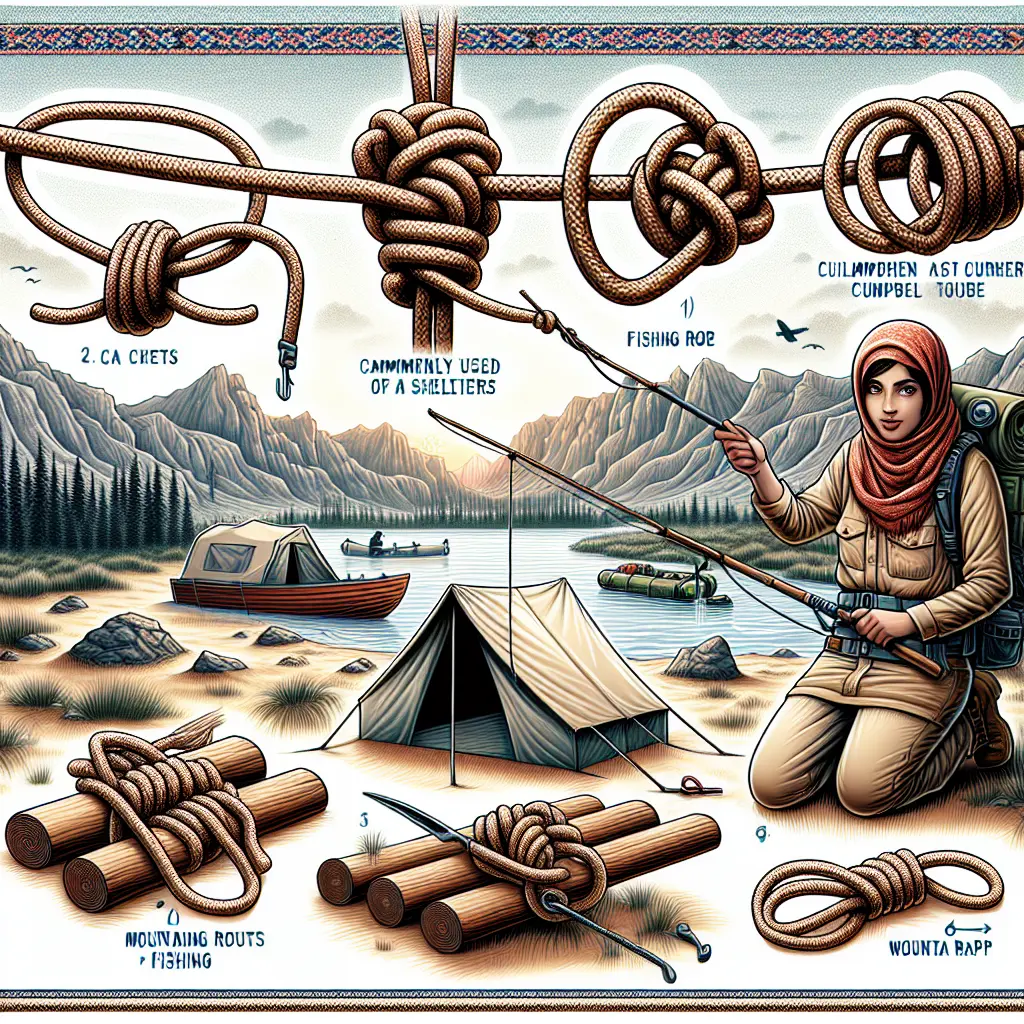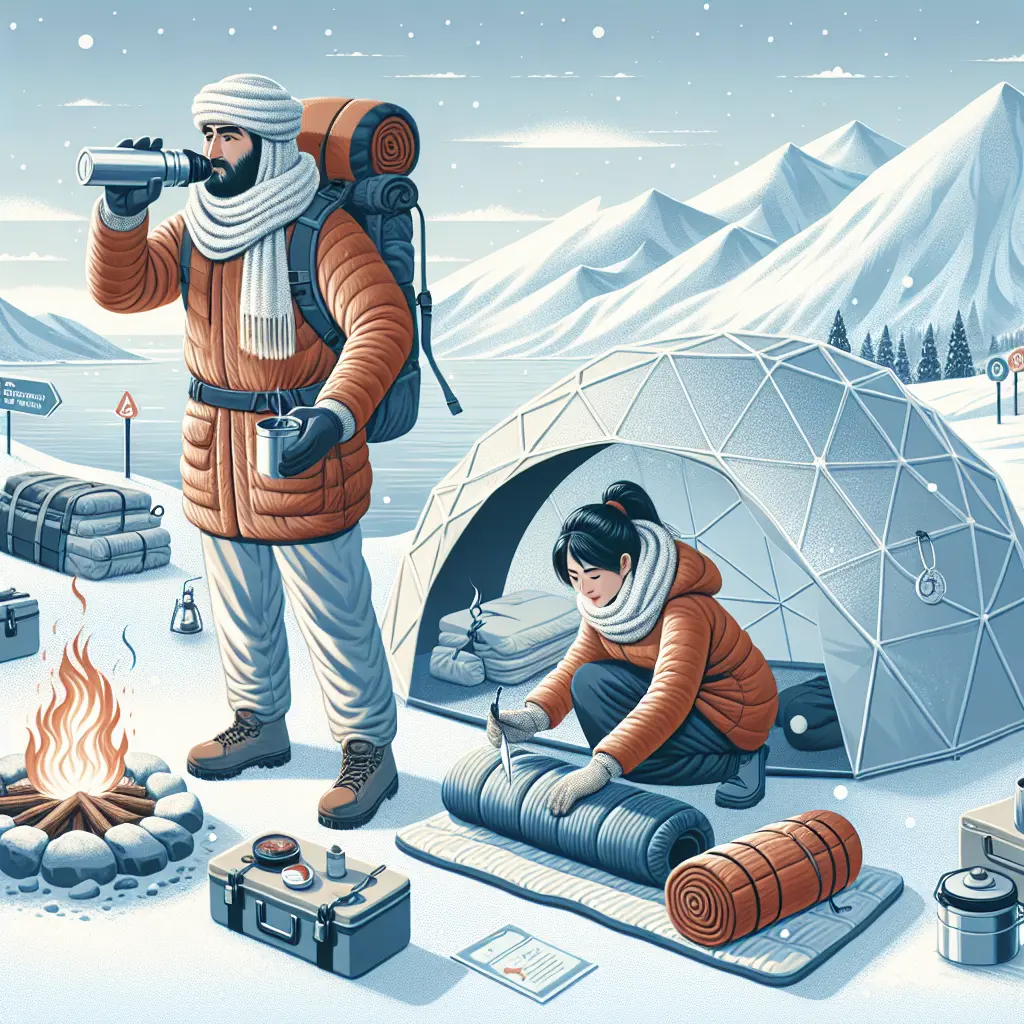Embarking on an outdoor adventure, whether it's a serene camping trip or a thrilling survival expedition, requires more than just a love for the great outdoors. One of the most crucial skills to master is knot tying, a craft that can make or break your wilderness experience. From ensuring your shelter remains intact during unpredictable weather to securely hanging food in trees to deter wildlife, knowing the right knots is essential. This comprehensive camping knot guide is your ticket to mastering outdoor survival knots that will elevate your outdoor skills.
Imagine you're in the woods, and the sun is setting. You've found the perfect spot to set up camp, but now you need to ensure your gear is secure and your food is safely stored away from curious critters. This is where the best knots for camping come into play. Mastering survival knot techniques isn't just about safety—it's about efficiency and peace of mind. With a firm grasp of outdoor cooking knots and camping food safety knots, you'll not only safeguard your provisions but also enhance your overall outdoor experience.
As we delve deeper into essential knots for camping, you'll discover how these seemingly simple rope techniques can transform your approach to nature. From secure knots for camping gear to food hanging knots for camping, each twist and loop serves a purpose. By honing your outdoor knot skills, you'll be prepared for any challenge the wilderness throws your way. So, let's explore the world of knot tying for outdoor survival and unlock the secrets to a successful adventure.
Choosing the right knots for outdoor survival and camping is a vital skill that transforms your wilderness experience. Whether you're a seasoned adventurer or a weekend warrior, understanding outdoor survival knots can significantly impact your safety and efficiency in the wild. This section of our camping knot guide will walk you through essential knots for camping, ensuring you're well-prepared for any situation nature presents.
Understanding the Importance of Knot Selection The selection of knots is crucial because each knot has a unique application and strength. For instance, using the wrong knot can lead to gear failure or inefficient food storage, which can be catastrophic in the wilderness. A reliable knot can ensure your shelter withstands inclement weather or that your food remains inaccessible to wildlife, emphasizing the importance of survival knot techniques in maintaining safety and convenience during your trip.
Categories of Essential Camping Knots
1. Secure Knots for Camping Gear Camping rope techniques are fundamental when it comes to securing your gear. The Bowline Knot is a must-know for creating a fixed loop at the end of a rope, which can be used to secure tents or hammocks. The Clove Hitch is another secure knot for camping gear, perfect for attaching ropes to trees or poles. Its simplicity and reliability make it a favorite among outdoor enthusiasts.
2. Knots for Hanging Food in Trees Food storage knots are essential for protecting your provisions from animals. The Bear Hang Knot technique involves a combination of knots, such as the Overhand Knot and the Trucker's Hitch, to safely hoist food bags into trees. This method not only keeps food out of reach from bears and other wildlife but also ensures easy access when needed.
3. Outdoor Cooking Knots Cooking in the wild requires specific knots to stabilize cooking setups. The Taut-Line Hitch is ideal for creating adjustable tension lines for tarps or cooking shelters. This knot allows for easy adjustments without retying, crucial when wind conditions change.
Survival Knot Techniques in Practice Using survival knot techniques effectively requires practice and understanding their practical applications. For instance, during a camping trip in the Rockies last year, campers found themselves in a sudden storm. Their use of the Alpine Butterfly Knot—a strong loop knot—enabled them to create an emergency line between trees to hang tarps quickly. This real-world example highlights how outdoor adventure knots can be life-saving in unpredictable conditions.
Latest Developments and Case Studies
Recent updates in outdoor survival emphasize the integration of technology with traditional skills. According to a 2024 report by Wilderness Society, advancements in rope materials have led to stronger, more durable ropes that enhance the effectiveness of traditional knots like the Figure-Eight Knot. This development means that campers can rely on these improved materials for better security and efficiency in knot tying for outdoor survival.
Furthermore, workshops and courses on camping trip knots have gained popularity, as noted in a National Geographic feature from early 2024. These programs focus on both basic knots for outdoor activities and advanced techniques, reflecting an increased interest in mastering outdoor knot skills among diverse age groups.
Interactive Knot Tying Resources Engagement with interactive resources is key to mastering these skills. Websites like Animated Knots by Grog offer step-by-step guides that visually break down each knot-tying process. By practicing with these resources, you can enhance your proficiency in camping food safety knots and other essential techniques.
Practical Tips for Mastering Knots
- Practice Regularly: Set aside time each week to practice different knots. Start with basic knots and gradually move to more complex ones.
- Use Real Scenarios: Apply your knot knowledge during actual outdoor activities to understand their practical uses and limitations.
- Join Community Workshops: Participate in local workshops or online forums where you can learn from experienced knot tyers.
By integrating these practical tips into your routine, you'll develop a robust understanding of both traditional and modern applications of survival knot uses, equipping you with the necessary skills for any outdoor adventure.
Conclusion: Mastering Knot Tying
In conclusion, choosing the right knots is not just about tying ropes; it's about preparing yourself for the challenges of nature with confidence and skill. Through continuous learning and adaptation to new technologies and materials, you'll elevate your camping experience and ensure safety and efficiency in all your outdoor endeavors.
In conclusion, mastering the art of knot tying is essential for enhancing your outdoor survival and camping experiences. Here are the key takeaways:
- Knot Selection: Choosing the right knot is crucial for safety and efficiency. A reliable knot can prevent gear failure and ensure proper food storage.
- Essential Knots:
- Secure Knots for Gear: Learn knots like the Bowline and Clove Hitch to secure your camping equipment effectively.
- Food Hanging Knots: Techniques such as the Bear Hang Knot protect your provisions from wildlife.
- Outdoor Cooking Knots: Use knots like the Taut-Line Hitch to stabilize cooking setups under changing conditions.
- Practical Applications: Real-world scenarios, such as using the Alpine Butterfly Knot in emergencies, demonstrate the life-saving potential of these skills.
- Modern Developments: Advancements in rope materials have enhanced traditional knots, offering better security and efficiency, as highlighted by recent studies.
- Learning Resources: Interactive platforms, such as Animated Knots by Grog, provide valuable tools to improve your knot-tying proficiency.
- Tips for Mastery:
- Practice regularly.
- Apply your skills in real scenarios.
- Join community workshops for hands-on learning.
As you continue to explore and refine your knot-tying skills, you're not just preparing for outdoor challenges—you're building confidence and readiness for any adventure nature presents. We invite you to share your experiences or insights on knot tying in the comments below. How have these techniques impacted your wilderness excursions? We look forward to hearing your stories!
Happy knot tying and safe travels!






Leave a Comment